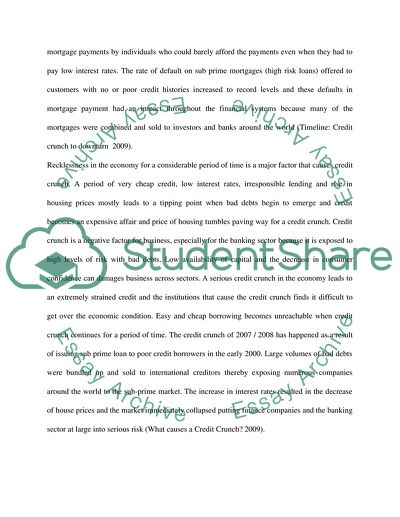Cite this document
(“Credit crunch and banking sector Essay Example | Topics and Well Written Essays - 3000 words”, n.d.)
Credit crunch and banking sector Essay Example | Topics and Well Written Essays - 3000 words. Retrieved from https://studentshare.org/macro-microeconomics/1554249-credit-crunch-and-banking-sector
Credit crunch and banking sector Essay Example | Topics and Well Written Essays - 3000 words. Retrieved from https://studentshare.org/macro-microeconomics/1554249-credit-crunch-and-banking-sector
(Credit Crunch and Banking Sector Essay Example | Topics and Well Written Essays - 3000 Words)
Credit Crunch and Banking Sector Essay Example | Topics and Well Written Essays - 3000 Words. https://studentshare.org/macro-microeconomics/1554249-credit-crunch-and-banking-sector.
Credit Crunch and Banking Sector Essay Example | Topics and Well Written Essays - 3000 Words. https://studentshare.org/macro-microeconomics/1554249-credit-crunch-and-banking-sector.
“Credit Crunch and Banking Sector Essay Example | Topics and Well Written Essays - 3000 Words”, n.d. https://studentshare.org/macro-microeconomics/1554249-credit-crunch-and-banking-sector.


